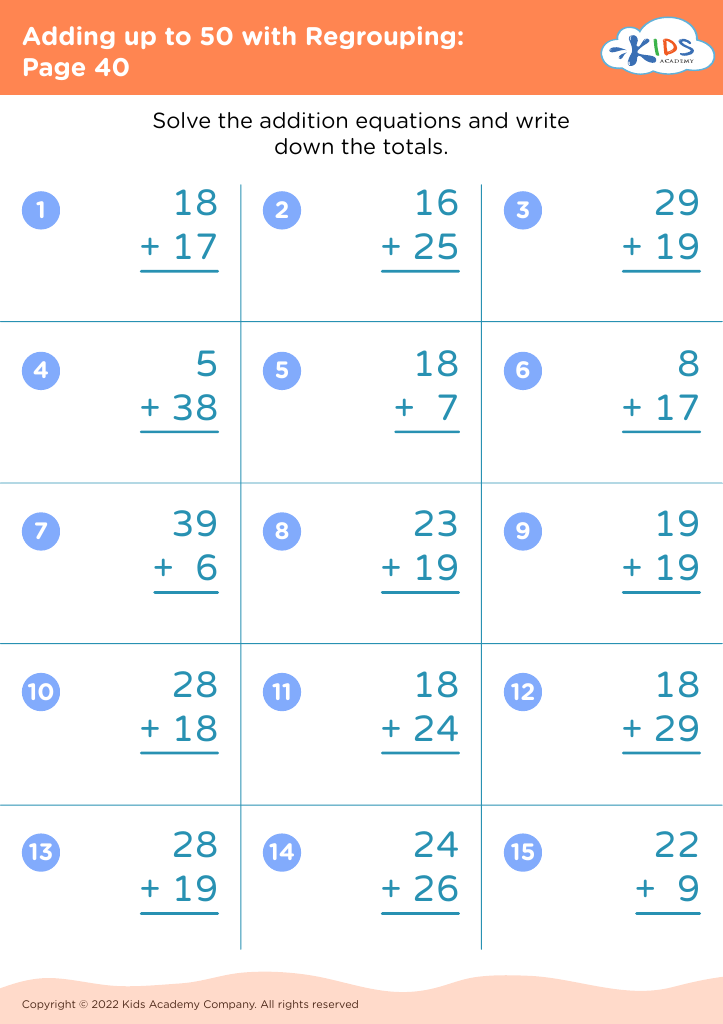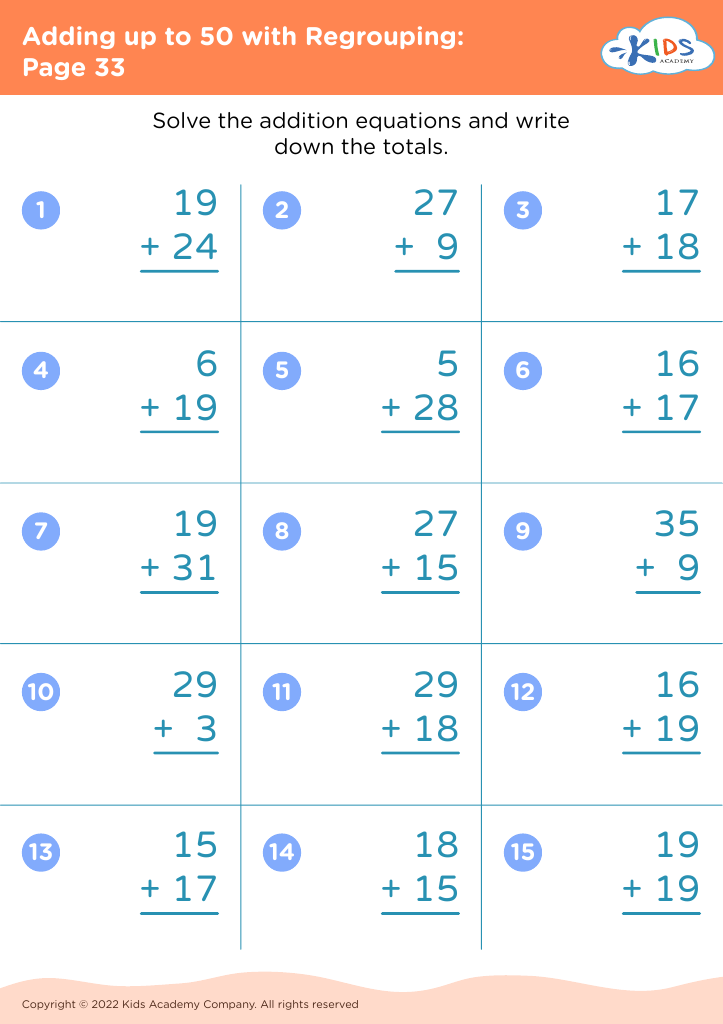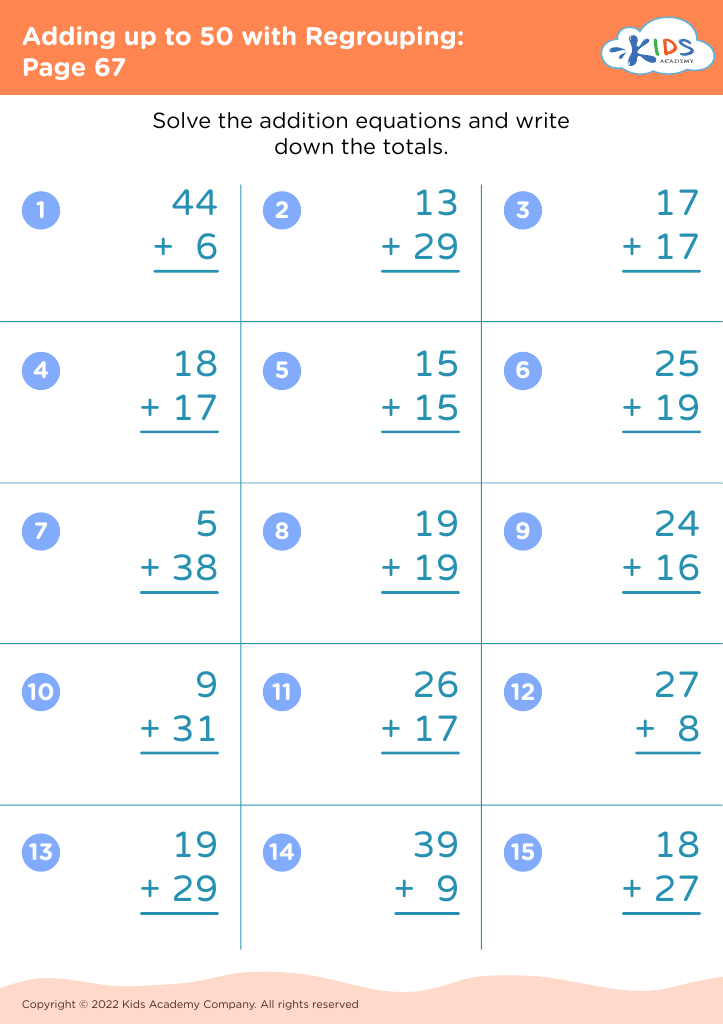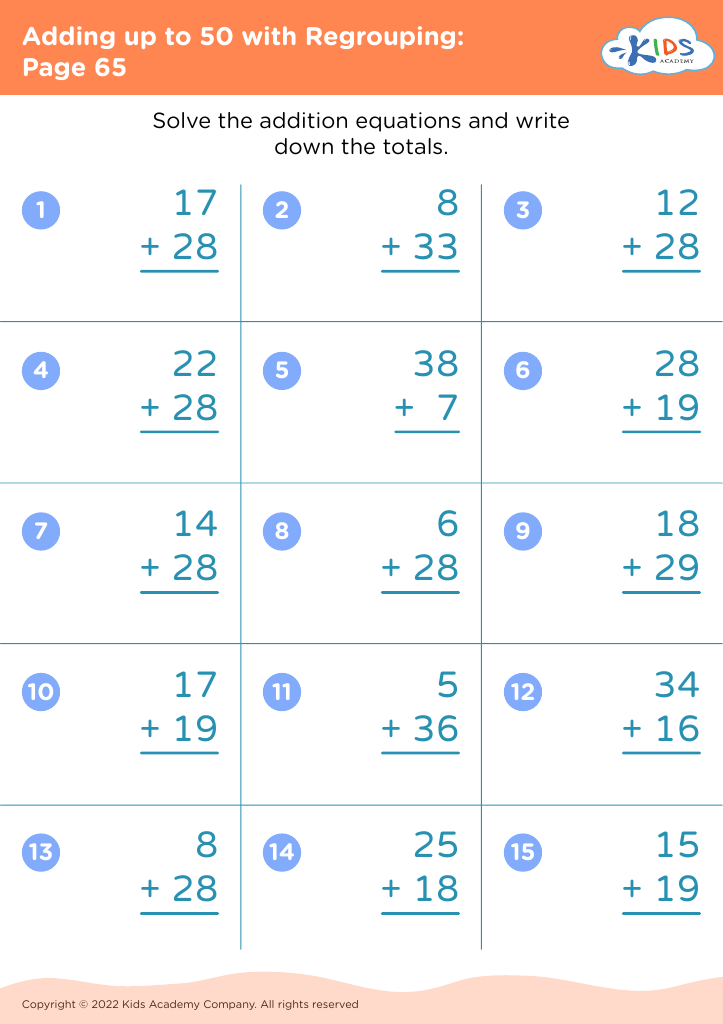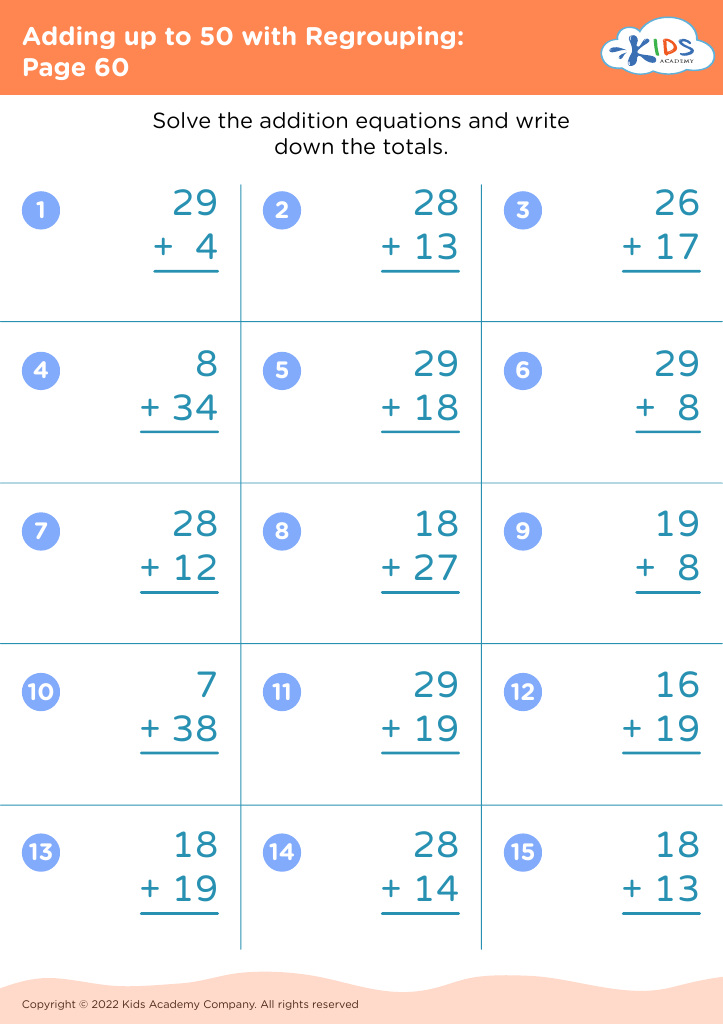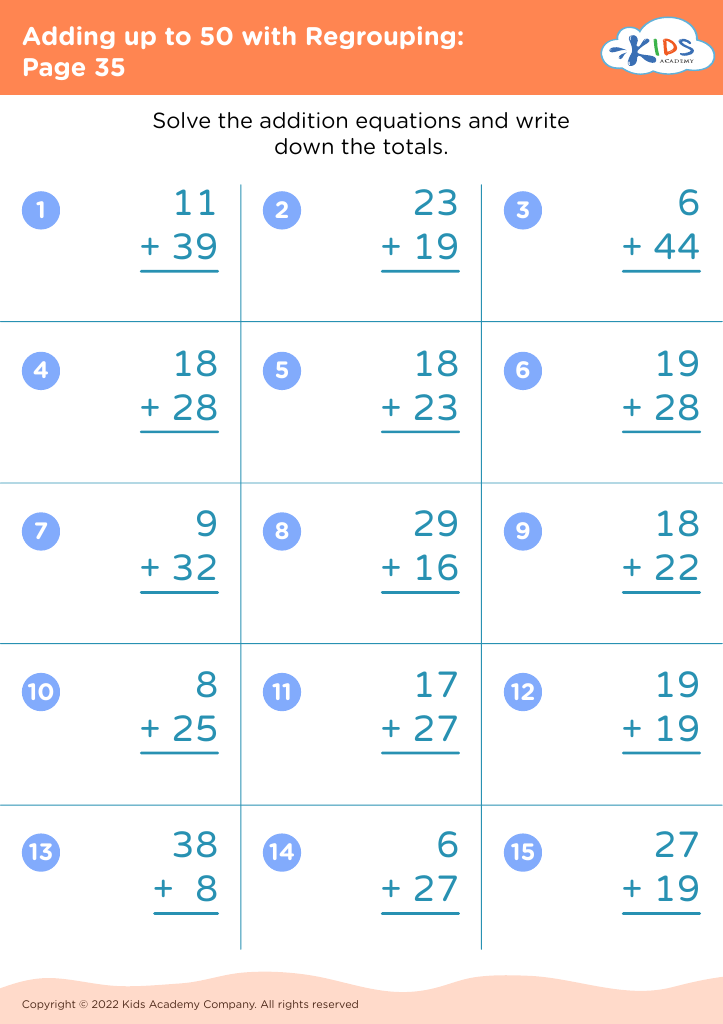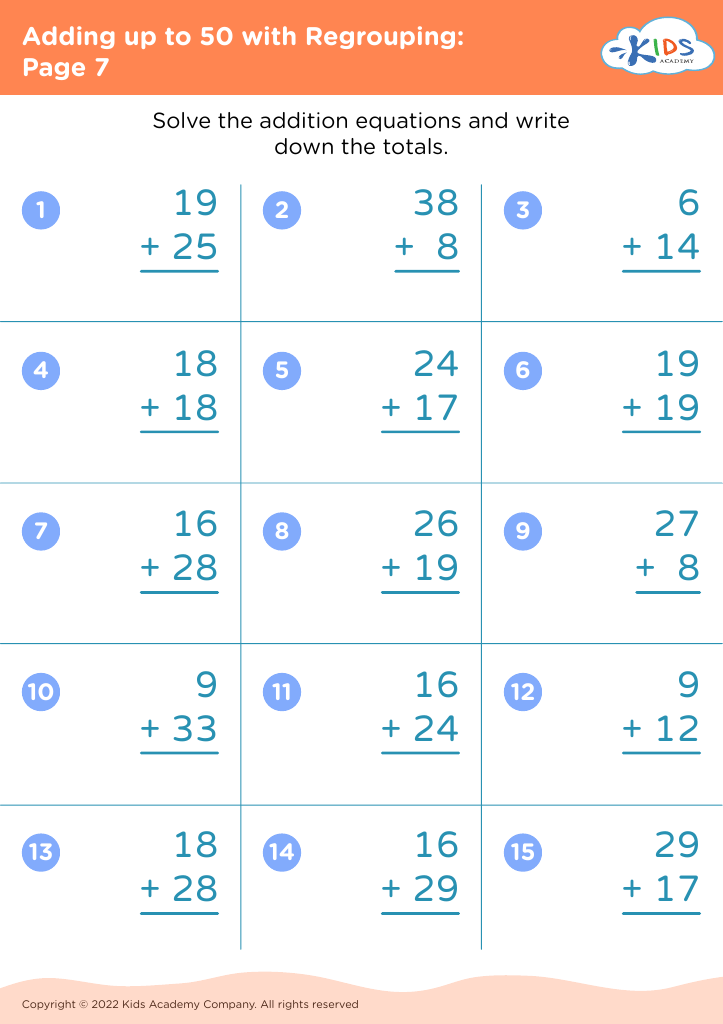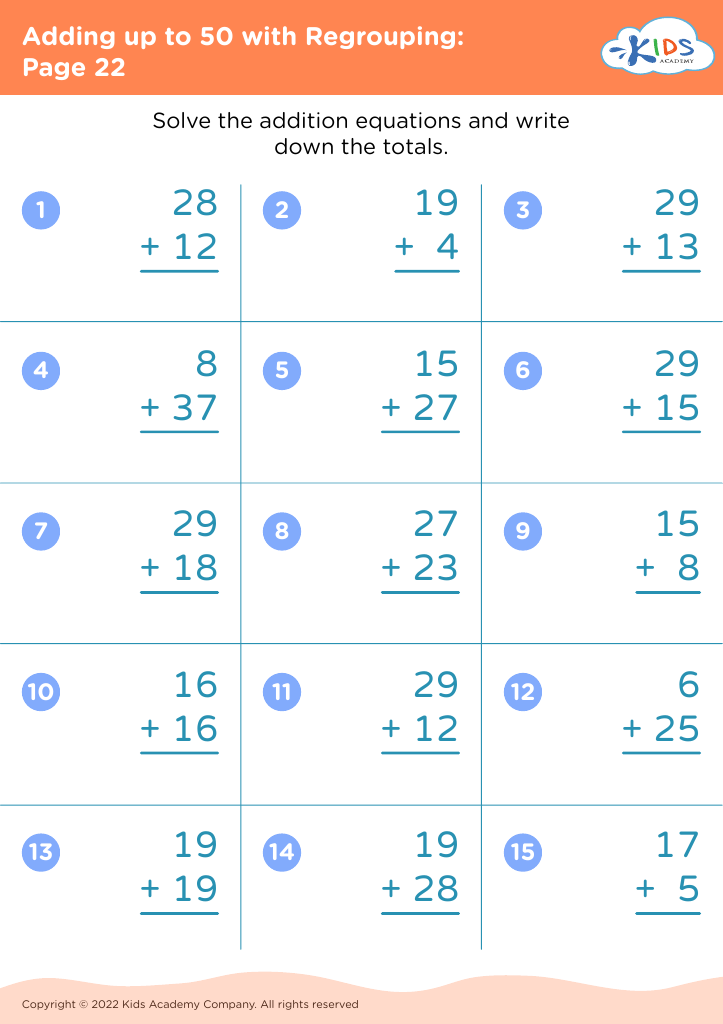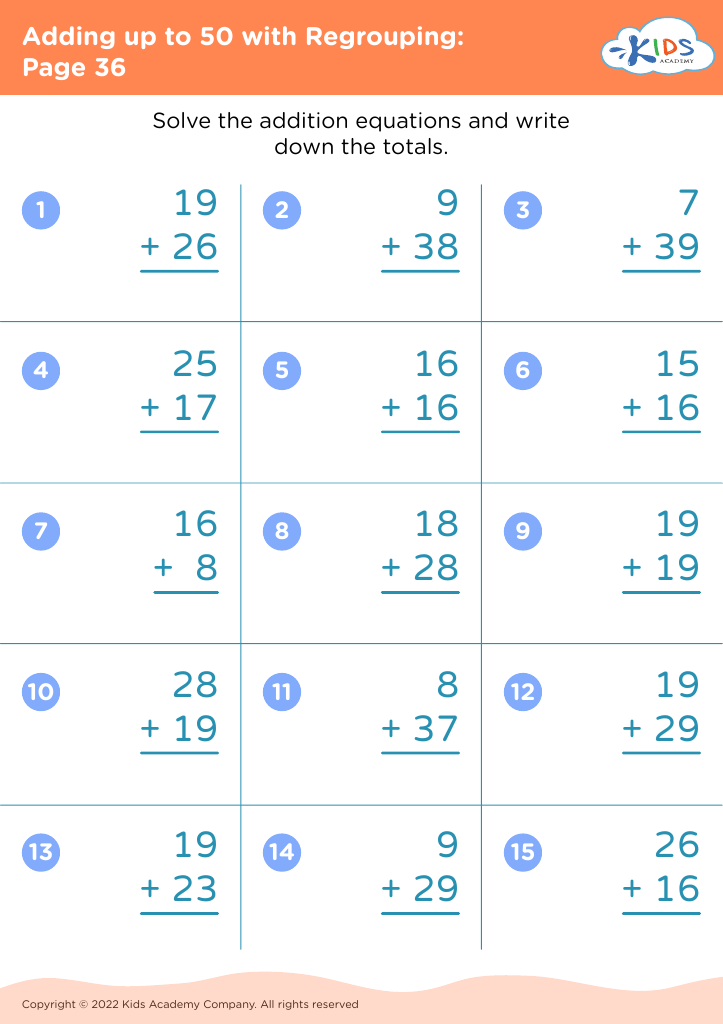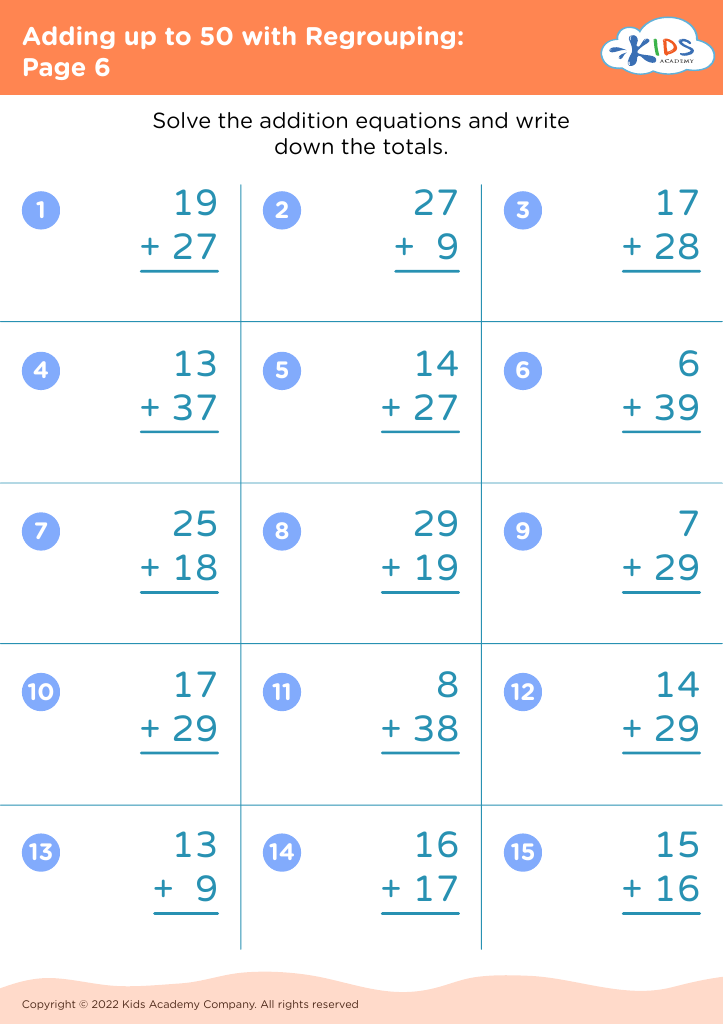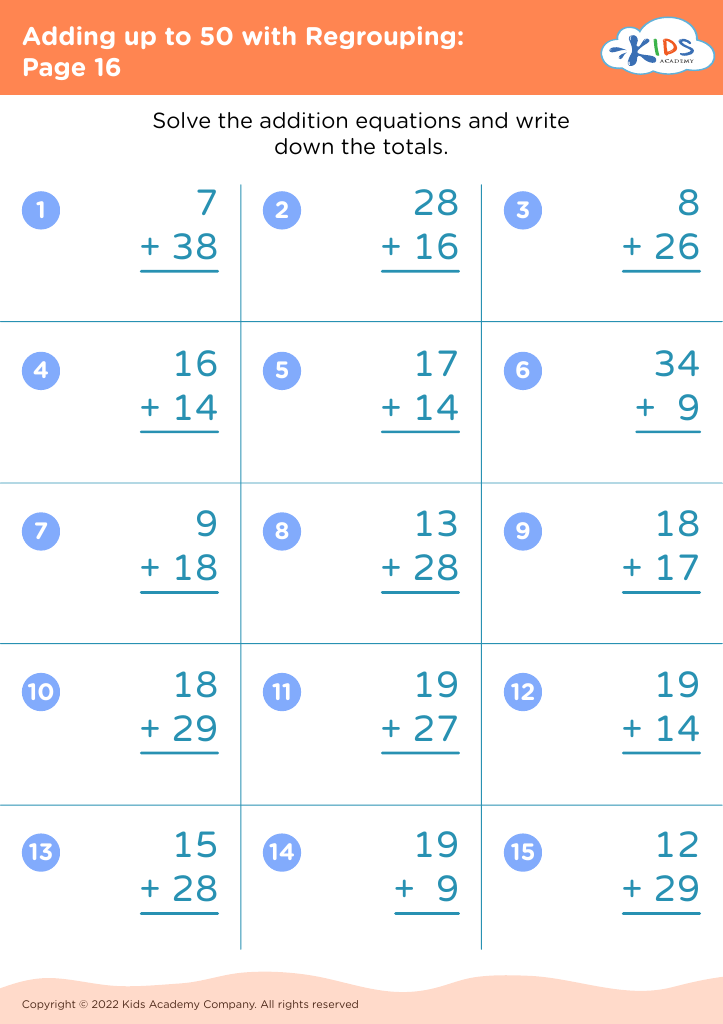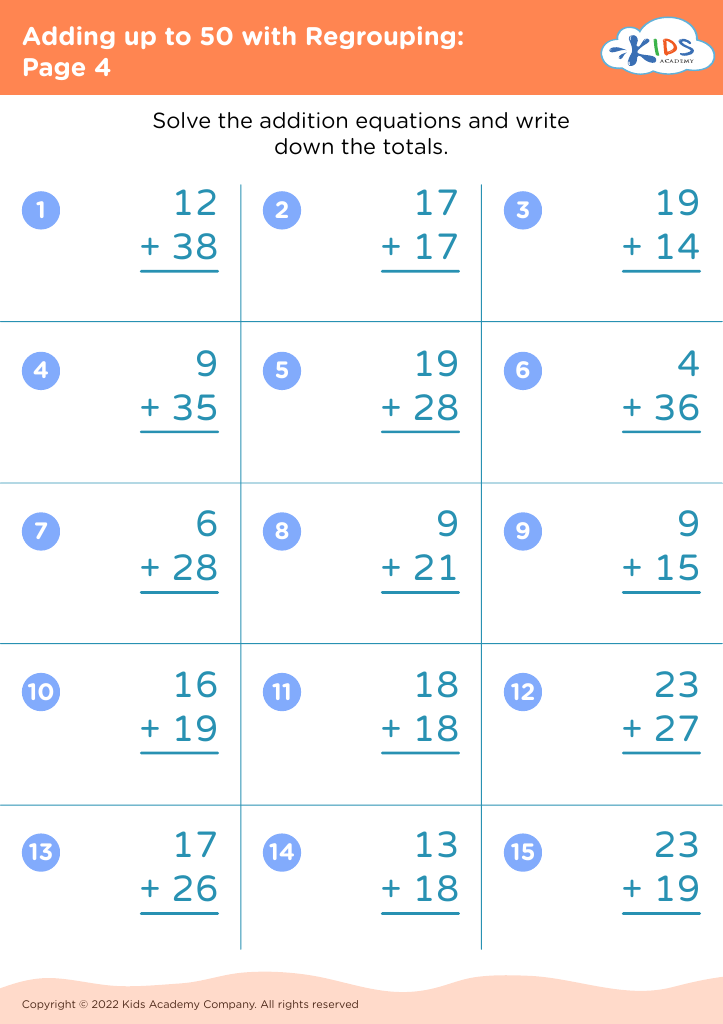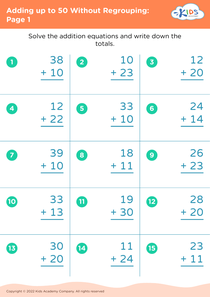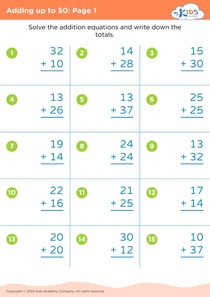Comparing Fractions Adding up to 50 with Regrouping Worksheets for Ages 5-8
12 filtered results
-
From - To
Enhance your child's math skills with our engaging "Comparing Fractions Adding up to 50 with Regrouping Worksheets" designed specifically for ages 5-8. These interactive worksheets provide fun and effective practice opportunities, helping young learners grasp the concept of comparing fractions while mastering addition with regrouping. Through colorful visuals and relatable examples, kids will build confidence in their mathematical abilities. Perfect for home or classroom use, these worksheets make learning enjoyable. Explore a variety of exercises that promote critical thinking and problem-solving skills, setting the foundation for future math success. Start your educational journey today with our exciting resources!
Understanding how to compare fractions, especially those that add up to 50 with regrouping, is crucial for young learners aged 5-8. This foundational skill has far-reaching implications for their overall mathematical understanding. Firstly, mastering this concept helps children develop number sense—a core aspect of mathematical proficiency. By comparing fractions, students learn to recognize size, quantity, and the relationships between different numbers, which are essential skills not only in math but in daily life.
Additionally, engaging with the idea of regrouping encourages mental flexibility. Children begin to see numbers creatively and understand that numbers can be broken down and rearranged, which enhances their problem-solving skills. Early exposure to these concepts lays the groundwork for future mathematical topics, including addition, subtraction, and even more complex operations.
Moreover, activities focused on comparing fractions foster critical thinking and reasoning. When teachers and parents emphasize these lessons, they are supporting children's cognitive development and preparing them for more advanced mathematical challenges.
Ultimately, is crucial for parents and educators to engage students in learning about comparing fractions, as it equips them with essential skills that contribute to their academic success and boost their confidence in mathematics.
